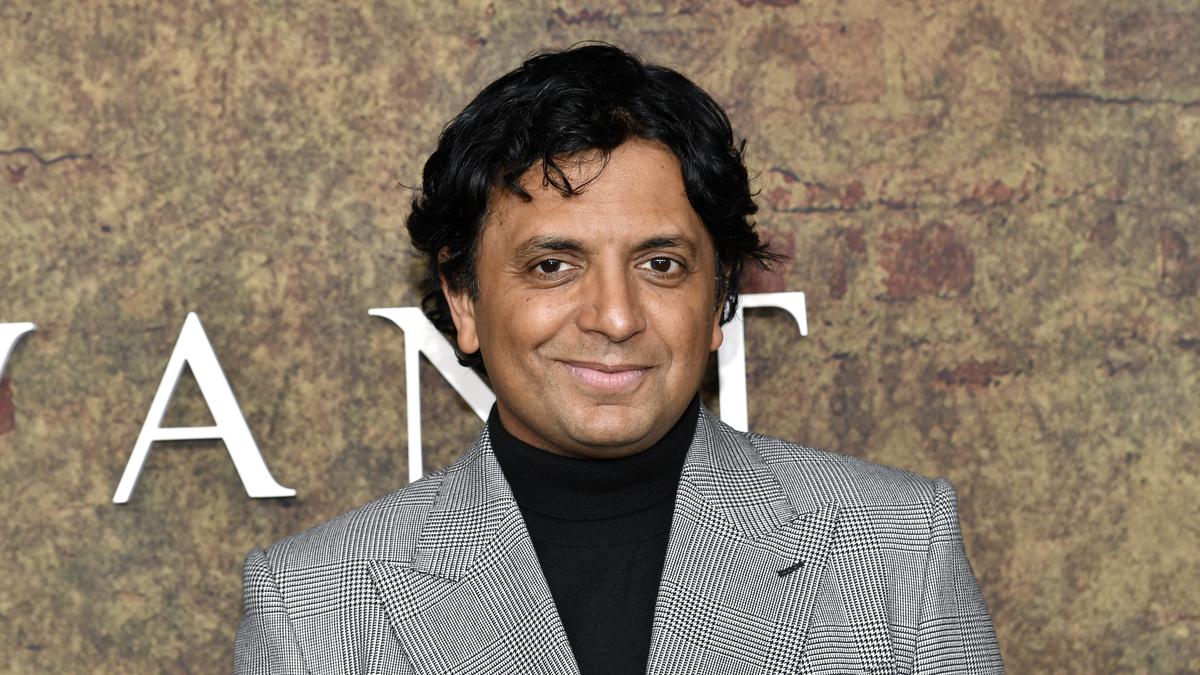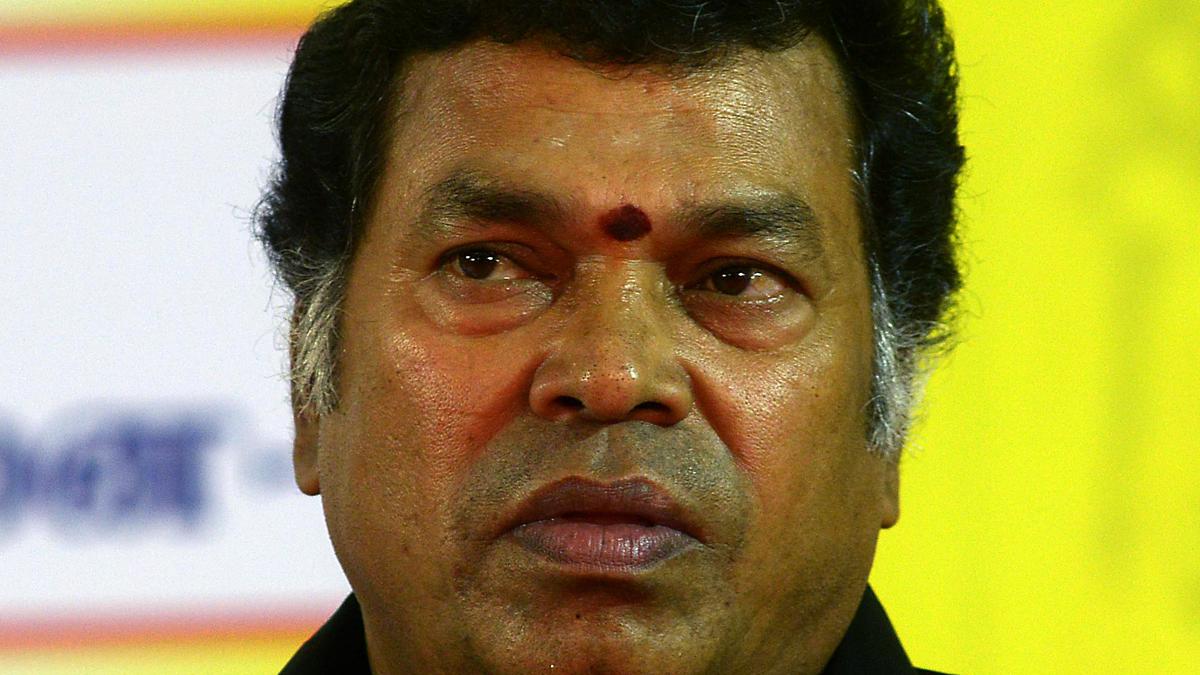In 1999, a 29-year-old filmmaker — who was born in Mahe, Puducherry to two doctors: a Malayali father and a Tamilian mother — suddenly emerged as Hollywood’s most exciting talent. A wildcard they had not seen in years, as A-listers across town clamoured to work with him… all because of one line of dialogue.
“I see dead people.”
And with those iconic words uttered by Haley Joel Osment in The Sixth Sense, Manoj Nelliyattu ‘M Night’ Shyamalan had well and truly arrived. In truth, he was always going to be a star, right from the time he made around 50 home movies as a precocious teenager or when he made his first film, the semi-autobiographical drama Praying with Anger (probably his most underrated flick) while at New York University (NYU).
Pretty soon, the Indian-American established himself as one of the leading cinematic voices of his generation — particularly in the horror/thriller genre — with films like Signs, The Village and of course, the legendary Eastrail 177 Trilogy ( Unbreakable, Split and Glass) that gave him international fandom and success.
M. Night Shyamalan present his next feature film ‘Knock at the Cabin’
| Photo Credit:
AFP
There have been misfires too, and high-profile ones at that — Lady in the Water and The Last Airbender, for instance — but Shyamalan’s biggest forte had been his desire to experiment, and vociferously at that, so he kept coming back.
Three years ago, he began serving as showrunner on Servant (created by Tony Basgallop), a psychological horror series right up his alley that has since emerged as one of his biggest coups. Starring actors Lauren Ambrose, Nell Tiger Free, Rupert Grint and Toby Kebbell, the show is an amalgamation of “a gothic novel, a black comedy and an allegorical play laced with supernatural suspense” that now enters its fourth and final season, following a young couple in mourning after a tragedy threatens to derail their marriage even as a mysterious force enters their home.
Next up, he also has the apocalyptic horror film Knock at the Cabin— a family of three vacationing at a remote cabin is suddenly held hostage by four strangers — starring the likes of Dave Bautista, Jonathan Groff, Ben Aldridge, Nikki Amuka-Bird and Rupert Grint too (who appears to be becoming a favourite of Shyamalan).
Talking to us over a Zoom video call, Shyamalan joins us for an exclusive interview to discuss the ending of the Apple TV+ show, how his daughter Ishana could follow in his footsteps, and reminiscing on his legacy as a filmmaker.
Excerpts from an interview:
When you have a show like ‘Servant’ which is a critical and commercial success, and not a finite tale, how do you make the decision to conclude it? Especially when you have the support of fans and a streaming platform that wants to keep funding the project?
That’s a really great question, and I have a complicated answer to it. I love this format, but one of the drawbacks is that you just keep telling the story until people are sick of seeing it, and then it’ll naturally die a death.
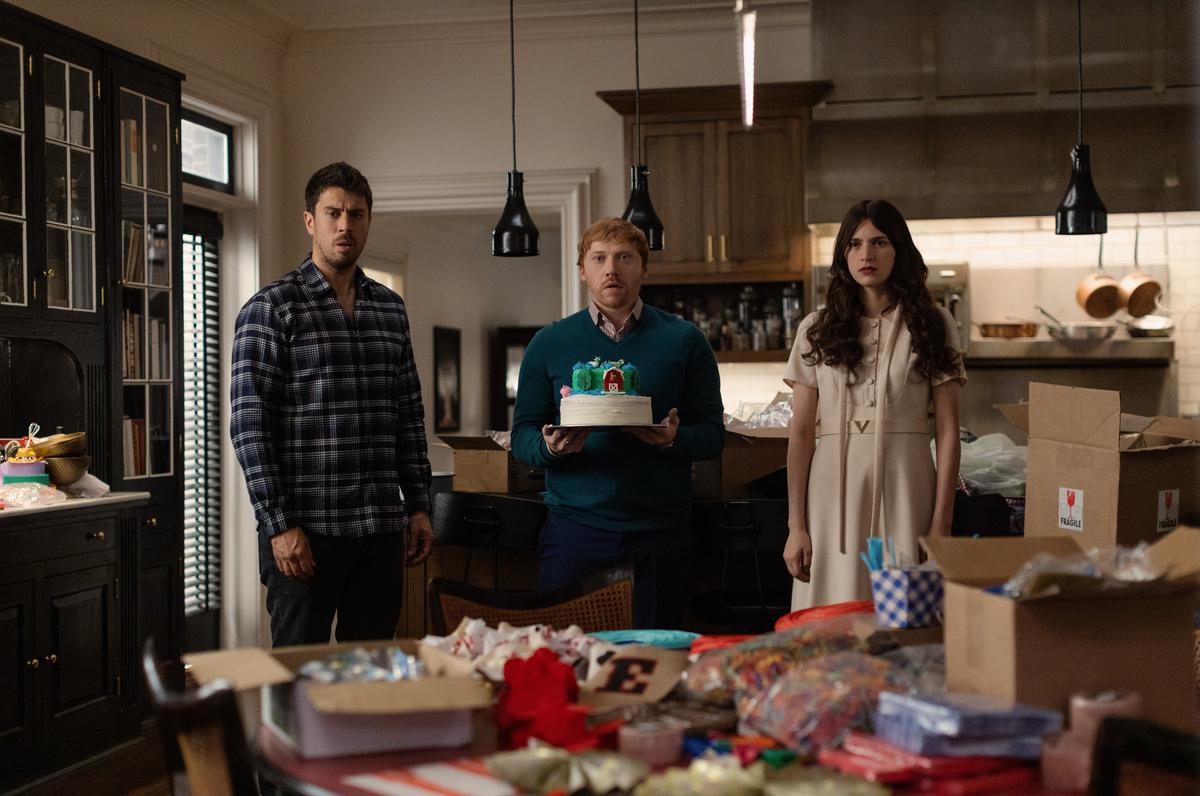
A still from ‘Servant’
It (the project) will go away as you just keep on trying to tell the same story, and we didn’t want that. I always knew when I started with Apple, that there was going to be an end with Servant, be it three or five or six seasons. It was very important to me that we finished the story and were aiming towards something.
Is it tough for a filmmaker used to making big-budget movies for the screen to balance those aspirations with a long-running show of this kind?
Because I also make movies, it is complicated for me to do both things at the same time. It’s not easy to put in time during the evenings and weekends trying to make this work. I’m putting in every footstep that you hear on-screen and mixing it in with the mixers, and saying, ‘No, a little louder, a little softer’, on every note of the score.
I am doing that. It’s not something I delegate. So it’s a very time-consuming process, but I believe those hundreds of little decisions are felt by the people watching. So while I’m committed to the story that we’re telling, it’s hard to do for so long.
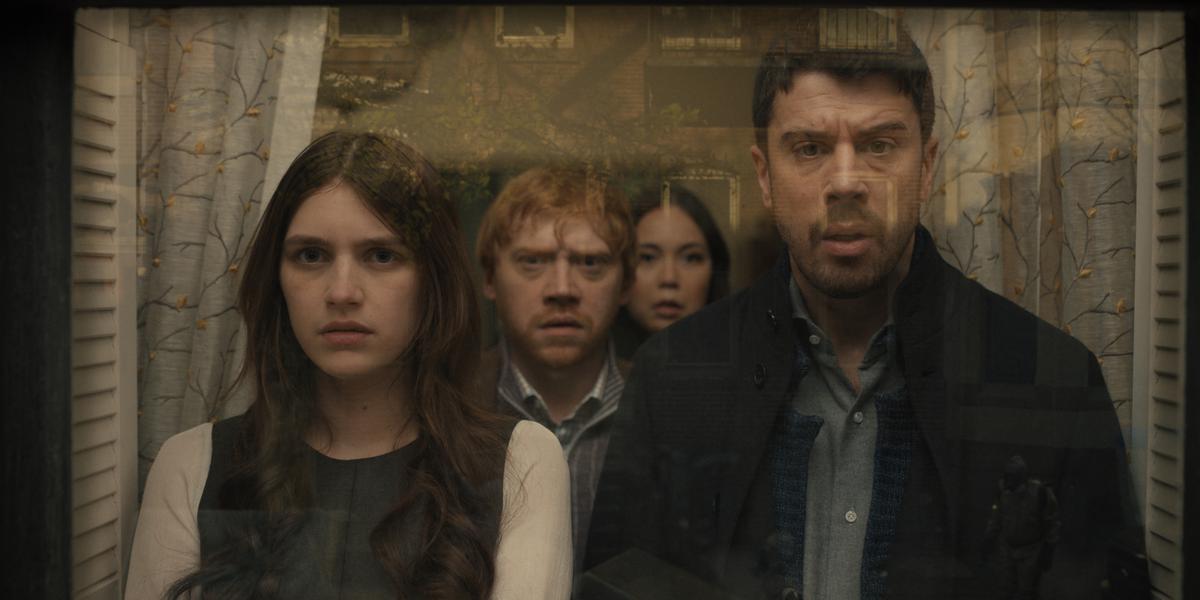
A still from ‘Servant’
It takes two years to do a movie. I’m such a different person at the end of the two years! I’m ready to tell a different story. This was four to five years of working on the show, and I truly loved it, but it came to a moment where I was wondering where the story would go. So I let the characters kind of tell me when the story was over for them.
But of course, everyone on my team and Apple were like, ‘Come on, what are we doing? Let’s go, let’s keep going!’ And we would have — if I wasn’t exhausted or I had organically thought of it. If I didn’t make the decision to do another season for the right reasons, the story won’t work, and you’d be able to tell; I don’t think I could live with myself if I did that.
It has been three decades since your first film — ‘Praying with Anger’ came out in 1992 — and since then, you have evolved from being that maverick talent in Hollywood into being the pre-eminent Indian filmmaker on a global stage. How do you look back at the last 30 years?
It is very interesting that it’s been 30 years since my first movie. Over the years, the USA and other countries around the world have all taken me as their own in different ways. The USA took me as their own because I lived there. The other countries look at me as an immigrant that came to the United States and succeeded. So when I go to Spain, Mexico or Japan, they embrace me for that aspect, as well as for my cinematic style that is influenced by European or even Japanese or Korean cinema.
Shyamalan directing Abigail Breslin in ‘Signs’ (2002)
The aesthetics are not exactly 100% American when you watch my films; they are paced in a different way, and their interest is slightly different. So you can tell it’s a global voice that’s telling these stories, and that has appealed and been resonant for 30 years now.
Do you have any idea why there haven’t been other Indian filmmakers in Hollywood who have followed in your wake and made an impact?
I am surprised that there haven’t been too many people — from the kind of background I am from — who have grown and began telling stories to the world. I’m not sure why. Maybe because the filmmaking community is so robust in India, that if you are from India, you just keep making movies there? I’m not sure.
But maybe, the next generation is already here to take up that mantle. Your daughter Ishana assisted you on the thriller ‘Old‘, and also directed ‘Servant’ episodes…
When we speak of Ishana, I’m obviously biased, but I do believe she is someone you and I will be talking about five to eight years from now. She will be a gigantic storyteller that the world knows. She grew up in a house of art, and also has that kind of mixture of cultures and points of view, but a female one. So an added uniqueness and beauty will come to her voice.
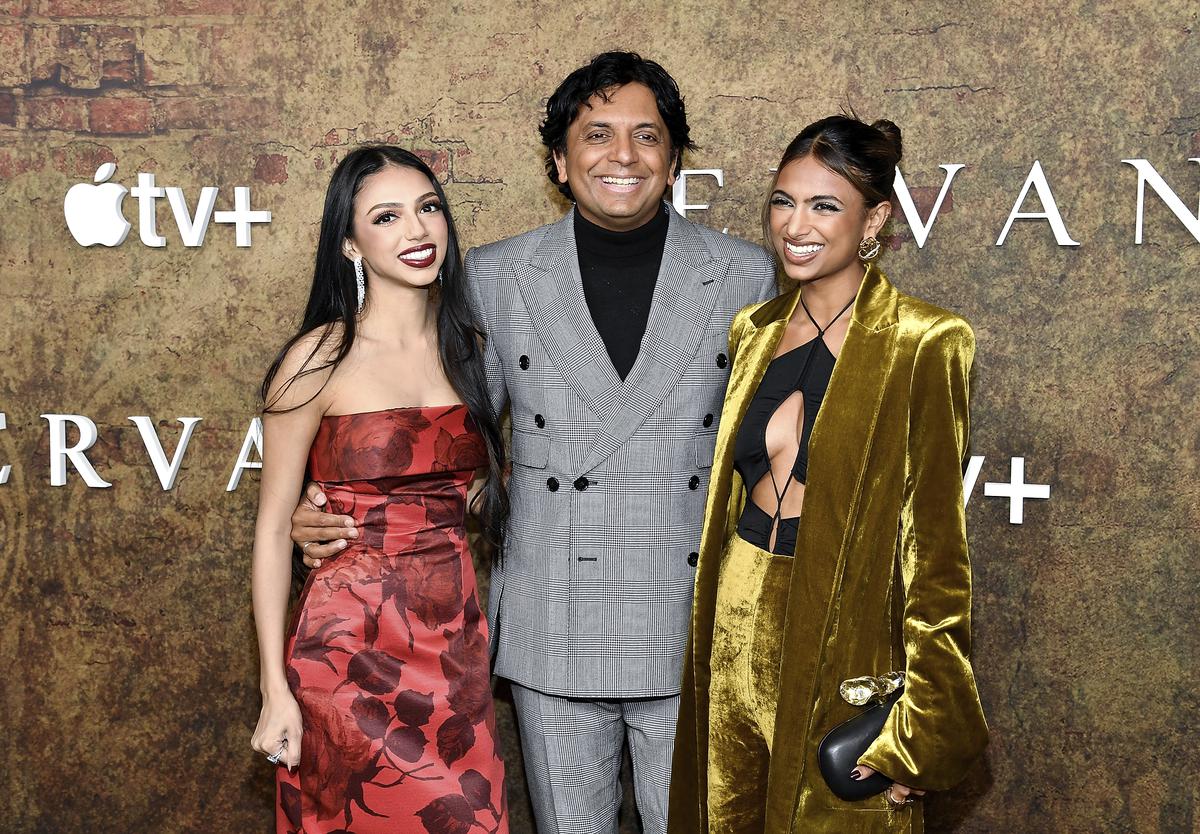
M. Night Shyamalan, center, and daughters Saleka Shyamalan, left, and Ishani Shyamalan attend the premiere of Apple+ TV’s ‘Servant’ Season 4
| Photo Credit:
AP
Rupert Grint has been one of the stars of ‘Servant’; the series has truly been a second coming of sorts for him since he played Ron Weasley in the ‘Harry Potter’ movies. Now you have also cast him in your next horror project, ‘Knock at the Cabin’. I came across an earlier interview wherein you refer to him as a “unicorn”. Could you talk about this equation?
Rupert is absolutely fantastic. You know, there were some talks about me doing a Harry Potter movie back in the day ( Harry Potter and the Philosopher’s Stone before Chris Columbus took over). So I’d met Rupert when he was just a kid, and now getting a chance to work with him as an adult has been such a joy, both in Servant and Knock at the Cabin.
He is the kindest person, so professional, and he’s really found his voice as an adult actor now. What I mean when I say he’s a unicorn is that he has this wicked sense of humour, and access to pathos — in a very pure, almost-childlike way — which is at the centre of most humour. That’s astonishing to notice when I give him a prompt; it’s like when I direct a child, it’s immediately right there in his face. He’s an amazingly pure soul and that comes off on screen. I love directing him and he’s an entertainer. It’s been a wonderful thing to bring him into the family and I’d love to keep working with him.
Season four of Servant is currently now streaming on Apple TV+ and Knock at the Cabin releases in theatres on February 3


